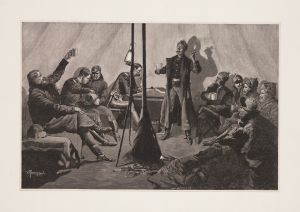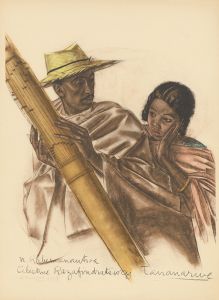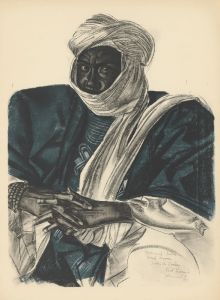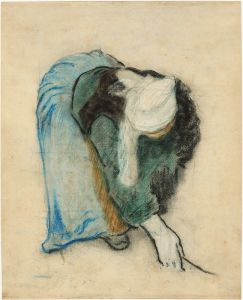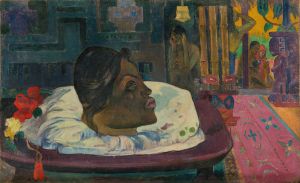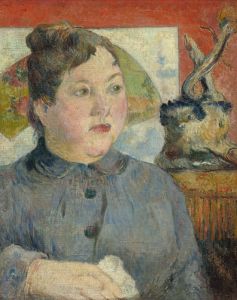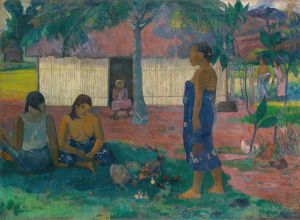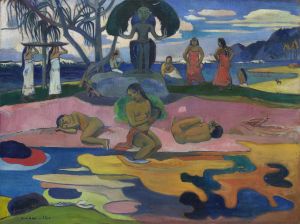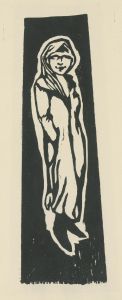
Two Marquesans
A hand-painted replica of Paul Gauguin’s masterpiece Two Marquesans, meticulously crafted by professional artists to capture the true essence of the original. Each piece is created with museum-quality canvas and rare mineral pigments, carefully painted by experienced artists with delicate brushstrokes and rich, layered colors to perfectly recreate the texture of the original artwork. Unlike machine-printed reproductions, this hand-painted version brings the painting to life, infused with the artist’s emotions and skill in every stroke. Whether for personal collection or home decoration, it instantly elevates the artistic atmosphere of any space.
Paul Gauguin's painting "Two Marquesans" is a notable work from the artist's later period, created during his time in the Marquesas Islands. Gauguin, a French post-impressionist artist, is renowned for his bold use of color and synthetist style that set him apart from his contemporaries. His time in the Marquesas, a group of volcanic islands in French Polynesia, was marked by a deep immersion in the local culture, which significantly influenced his artistic output.
"Two Marquesans" was painted in 1902, a year before Gauguin's death in 1903. This painting is a reflection of Gauguin's fascination with the indigenous people and their way of life. The work depicts two Marquesan figures, showcasing Gauguin's characteristic style of vivid colors and simplified forms. The figures are portrayed with a sense of dignity and presence, which is a testament to Gauguin's respect for the Marquesan people and his desire to capture their essence on canvas.
Gauguin's choice to live in the Marquesas was driven by his quest for an unspoiled paradise, away from the industrialized world of Europe. He sought inspiration from what he perceived as the purity and authenticity of the islanders' lifestyle. This painting, like many of his works from this period, reflects his attempt to document and interpret the cultural and spiritual life of the Marquesas.
The composition of "Two Marquesans" is notable for its use of bold outlines and flat areas of color, a technique that Gauguin developed during his earlier years in Tahiti. This approach was influenced by his interest in Japanese prints and the cloisonnism style, which emphasizes strong outlines and contrasting colors. In "Two Marquesans," Gauguin employs these techniques to create a sense of harmony and balance, drawing the viewer's attention to the figures' serene expressions and the vibrant patterns of their clothing.
Gauguin's work in the Marquesas, including "Two Marquesans," is often seen as a culmination of his artistic journey. It represents his ongoing exploration of themes such as primitivism, spirituality, and the human condition. Despite the idyllic settings he often portrayed, Gauguin's life in the Marquesas was fraught with difficulties, including health issues and conflicts with colonial authorities. Nevertheless, his time there was incredibly productive, resulting in a significant body of work that continues to be celebrated for its innovation and emotional depth.
"Two Marquesans" is housed in a private collection, and like many of Gauguin's works, it has been the subject of numerous exhibitions and scholarly studies. The painting is a poignant reminder of Gauguin's enduring legacy and his profound impact on modern art. Through his unique vision and daring approach, Gauguin paved the way for future generations of artists to explore new forms of expression and to seek inspiration beyond the traditional confines of Western art.






